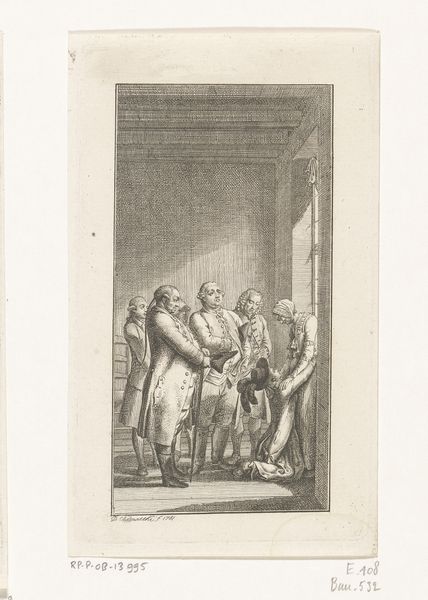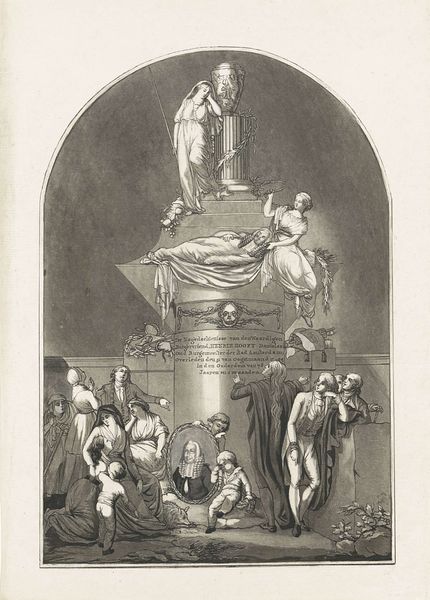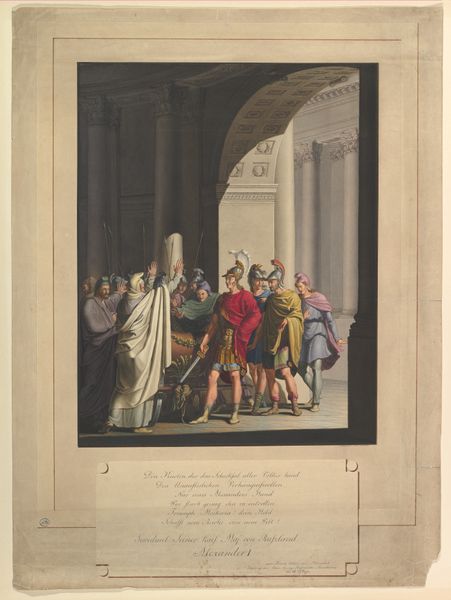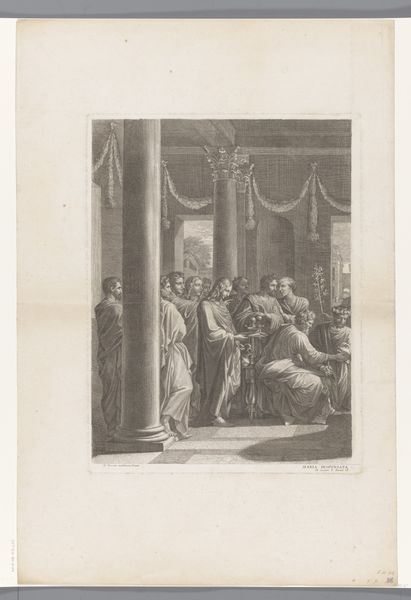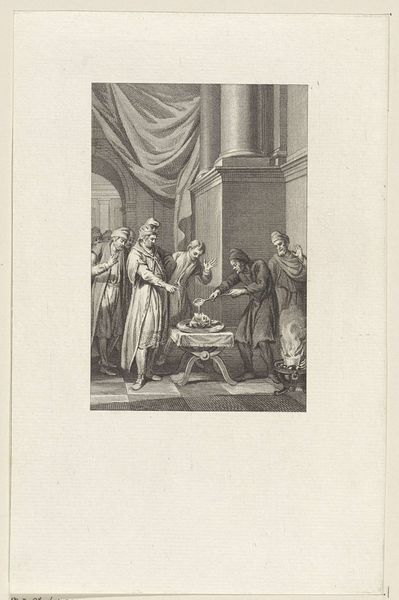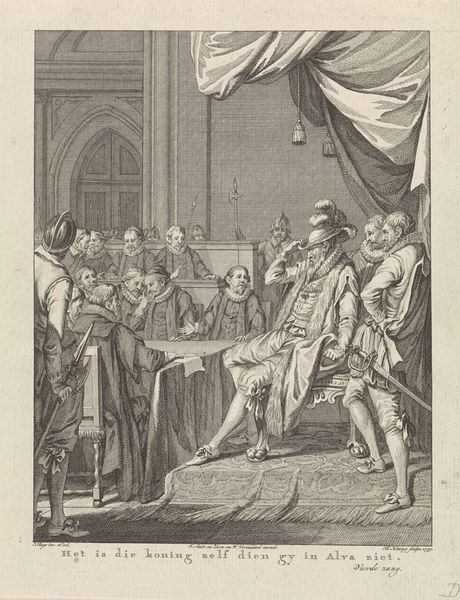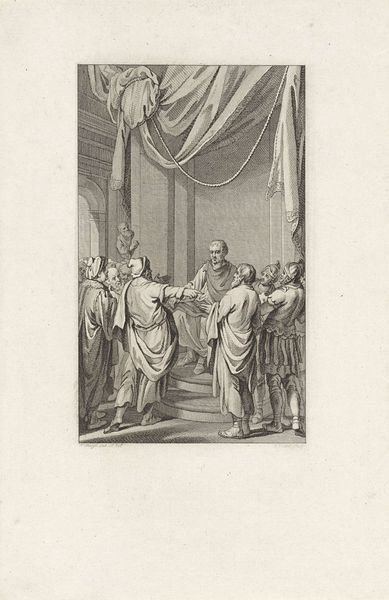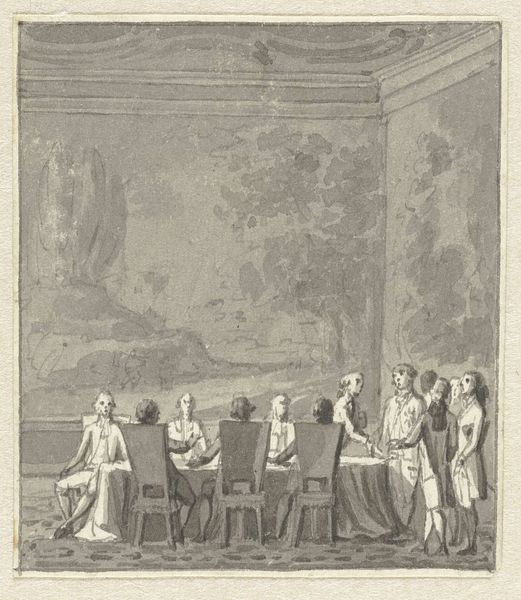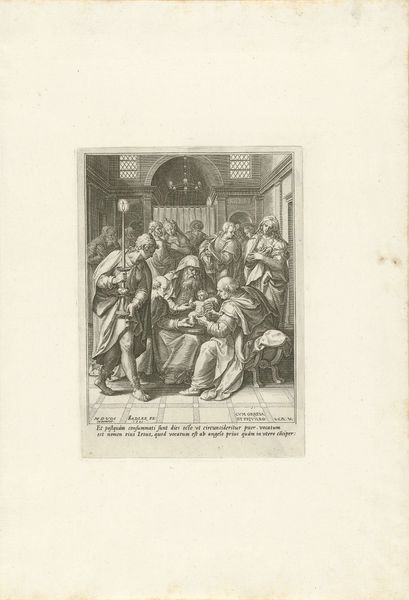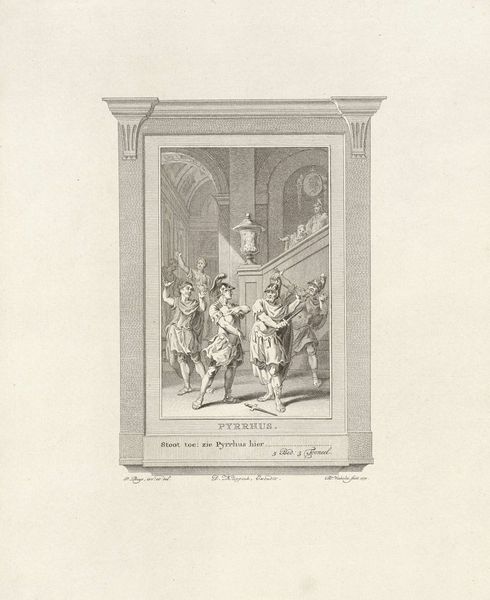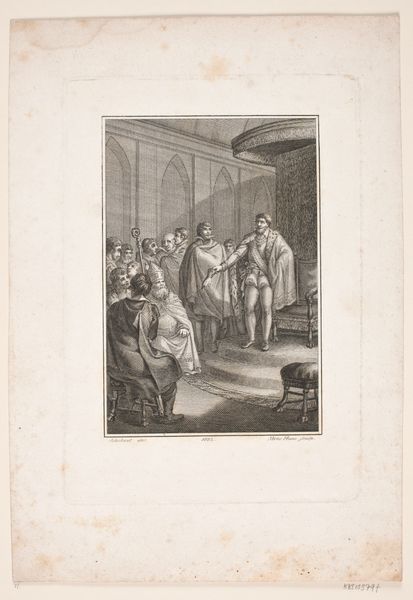
Assembly of Roman Figures, from Regulus, a play by Collin 1810 - 1883
0:00
0:00
drawing, print
#
portrait
#
drawing
#
neoclacissism
#
narrative-art
# print
#
caricature
#
caricature
#
figuration
#
men
#
portrait drawing
#
watercolour illustration
#
history-painting
Dimensions: sheet: 13 7/16 x 11 7/8 in. (34.1 x 30.2 cm)
Copyright: Public Domain
Curator: This is "Assembly of Roman Figures, from Regulus, a play by Collin," a drawing created sometime between 1810 and 1883, currently residing here at the Met. It appears to be a print of some kind. Editor: It strikes me as remarkably theatrical. There’s such deliberate staging in the composition, the figures posed as if caught mid-performance. Curator: The narrative certainly suggests that. What we’re seeing here is likely related to the performance or the set design for Collin’s play, Regulus. Look closely at how the costumes define status and identity. Editor: Yes, the visual language of Roman attire is key. The togas, the bare legs on some figures – it’s all carefully considered to project an image of authority and perhaps also... heroism. I detect an intentional referencing to Neoclassical ideals, in how the male forms are rendered and how the space appears to be derived from the design of Greek and Roman forums. Curator: Indeed. The very act of depicting this theatrical production underscores the interplay between classical ideals and contemporary interpretation. What were the means through which audiences of the time were introduced to the material cultures that we now regard as ancient civilizations? We're talking about illustrations in published books and perhaps this print, reproduced for sale, distributed amongst middle class buyers, no? Editor: Precisely. The Roman imagery conveys far more than mere aesthetic imitation. Think of the column, rendered so smoothly, in an austere gray and white -- a signifier of power, law, and historical continuity. The seated figure surrounded by standing orators implies leadership, a call for justice, even sacrifice, perhaps hinting at themes from the play itself. Regulus' life became associated with civic virtue in that time period and his sacrifice would've played as a heavy moral story to a nation not so far removed from it's own sacrifices during its revolution. Curator: It all points to how symbols gain weight within specific cultural and political moments. How Neoclassical artworks become these loaded objects, embodying aspirations and national self-perception. The mode of the print enabled people to consume idealized political lessons within their own homes. Editor: Agreed. Reflecting on this piece, the artist uses established visual motifs of power and rhetoric in order to convey a specific set of emotions that resonated then and that may still speak to us today. Curator: Looking at it through the lens of its material existence makes the ideological dimensions clearer than looking at this as a high art object in its own right. Thank you for that illumination.
Comments
No comments
Be the first to comment and join the conversation on the ultimate creative platform.
